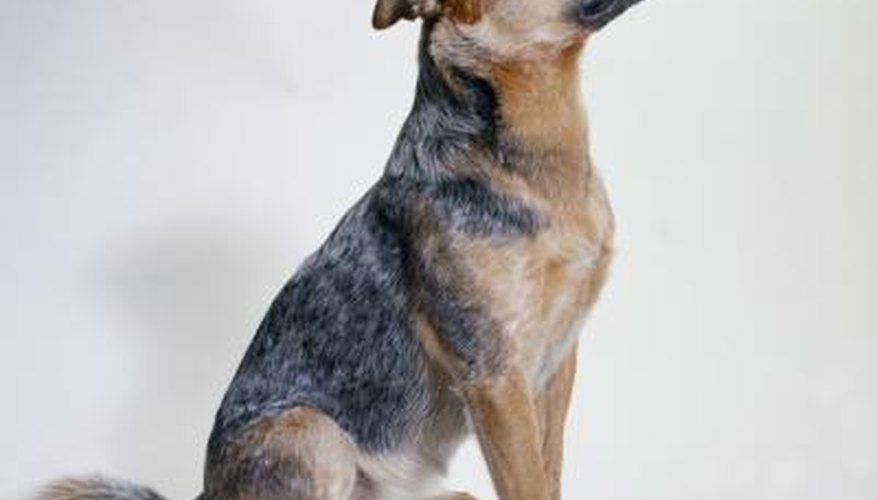Australian blue heelers can make great companions for the right person. Although a pro and con list is subjective to the individual -- a person in an apartment would have a different pro and con list than a person using the dog on a farm -- there are a few key characteristics that a prospective dog owner should look at when considering the breed.
General characteristics
The Australian blue heeler (also known as the Australian cattle dog ) was created by pioneers who settled in Australia in the 1800s. They crossed dingo-blue merle collies with Dalmatians and black and tan kelpies. There is speculation that the bull terrier breed was also used. The resulting combination was a breed that possessed great stamina and could handle herding cattle on large ranches. Heelers are compact sturdy dogs, weighing an average of 20 to 22.7 kg (44 to 50 lb). Males measure to approximately 45 to 50 cm (18 to 20 inches) at the withers, and females measure to approximately 42.5 to 47.5 cm (17 to 19 inches).The lifespan averages at 11 years. The blue heeler is a relatively healthy breed, only prone to hip dysplasia, progressive retinal atrophy (PRA) and deafness. Australian blue heelers can be blue, blue mottled or blue speckled, with or without black, tan or white markings, while their red counterparts are evenly speckled with solid red markings.
- The Australian blue heeler (also known as the Australian cattle dog ) was created by pioneers who settled in Australia in the 1800s.
- The blue heeler is a relatively healthy breed, only prone to hip dysplasia, progressive retinal atrophy (PRA) and deafness.
Temperament
Australian blue heelers are a loyal, brave, stubborn and hardworking breed. They are listed as one of the top breeds for intelligence. This is not a breed for a couch potato. They require intense mental and physical stimulation or they will become bored and destructive. If given firm and consistent training from an early age, along with daily activity, the Australian blue heeler will prove a wonderful and happy pet. Australian blue heelers also make excellent guard dogs. The dog is absolutely loyal and obedient to its master, although it tends to sometimes show suspicion of people and dogs it doesn't know. Early socialisation with other dogs, animals and humans of all ages is crucial in order to produce a non-aggressive dog.
- Australian blue heelers are a loyal, brave, stubborn and hardworking breed.
- The dog is absolutely loyal and obedient to its master, although it tends to sometimes show suspicion of people and dogs it doesn't know.
Energy level
Hope you have your jogging shoes ready; this breed has great stamina and will take all of the exercise you can provide. Daily mental and physical stimulation is an absolute must. Australian blue heelers often do better when assigned a job or task. Some examples would be to enrol the dog in agility training, Dog Disc tournaments and herding trials. Bored dogs will become destructive and develop behaviour problems. If you are unable to commit to an Australian blue heeler's high energy demands, this may not be the breed for you.
- Hope you have your jogging shoes ready; this breed has great stamina and will take all of the exercise you can provide.
- Australian blue heelers often do better when assigned a job or task.
Grooming
Australian blue heelers are low maintenance when it comes to grooming. Occasional brushing is all that is needed to maintain a clean coat. Australian blue heelers have annual periods of shedding (twice a year in the case of intact females); however, they are minimal shredders throughout the rest of the year. Frequent brushing and a bath during the high shedding period should be enough to contain the shedding hair.
- Australian blue heelers are low maintenance when it comes to grooming.
- Frequent brushing and a bath during the high shedding period should be enough to contain the shedding hair.
